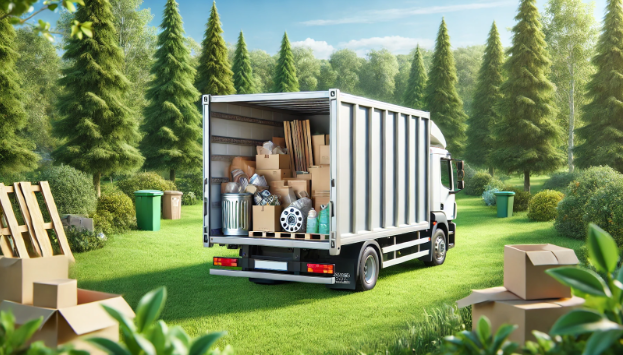
The Ultimate Guide to Eco-Friendly Junk Disposal
Trash happens. But how we handle it can make a massive difference to the planet. Every year, tons of waste fill our landfills unnecessarily, damaging ecosystems and contributing to pollution. What if there was a way to declutter while helping the environment? This guide explores eco-friendly junk disposal methods that are simple, effective, and impactful. Get ready to turn your junk into a sustainable solution.
What Is Eco-Friendly Junk Disposal?
Eco-friendly junk disposal involves managing waste in ways that reduce environmental impact. This includes recycling, repurposing, donating, and proper disposal of hazardous materials. It’s about ensuring that as little as possible ends up in landfills.
Why Eco-Friendly Junk Disposal Matters
- Reduces landfill waste: Landfills release harmful gases like methane, a major contributor to climate change.
- Conserves resources: Recycling saves raw materials and energy.
- Protects wildlife: Proper disposal prevents toxins from entering ecosystems.
- Promotes sustainability: Encourages responsible consumption and waste management.
How to Dispose of Junk Sustainably
1. Start with Sorting
Organize your junk into categories:
- Recyclables (glass, paper, plastic)
- Donateables (clothes, furniture)
- Hazardous waste (batteries, electronics)
Pro Tip: Label bins for easy segregation.
2. Recycle Effectively
- Know local recycling rules: Different municipalities have different recycling capabilities.
- Clean recyclables: Wash items like cans and bottles to avoid contamination.
- Utilize drop-off centers: For items like electronics and large metal appliances.
3. Donate and Repurpose
- Donate usable items: Furniture, clothes, and toys can find new homes through charities.
- Repurpose creatively: Turn old jars into storage containers or use wooden pallets for DIY furniture.
4. Handle Hazardous Waste Properly
Improper disposal of hazardous waste can harm the environment. Examples include:
- Electronics: Drop off at e-waste recycling centers.
- Paint: Take to a local hazardous waste facility.
- Batteries: Use designated recycling programs.
5. Composting
Organic waste like food scraps and yard waste can be composted to create nutrient-rich soil for gardens. This reduces methane emissions from organic matter in landfills.
6. Hire Eco-Friendly Junk Removal Services
- Look for services that emphasize recycling and donation.
- Check reviews to ensure their practices align with eco-friendly standards.
Resources for Sustainable Living
| Resource | Purpose |
|---|---|
| Earth911 | Find local recycling centers. |
| Habitat for Humanity | Donate furniture and home goods. |
| TerraCycle | Recycle hard-to-recycle items like packaging. |
| EPA’s Hazardous Waste | Guidelines for safe hazardous waste disposal. |
Eco-Friendly Tips for Reducing Junk
- Adopt a minimalist lifestyle: Buy only what you need.
- Repair before replacing: Fix items instead of discarding them.
- Opt for reusable over disposable: Replace single-use items with durable alternatives.
Common FAQs About Eco-Friendly Junk Disposal
1. What items can’t be recycled?
Certain items like greasy pizza boxes, some plastics, and broken ceramics aren’t recyclable. Check local guidelines for specifics.
2. How can I find recycling centers near me?
Use online directories or apps like Earth911 to locate nearby facilities.
3. Is donating always a better option than recycling?
Yes, if the item is still usable. Donations extend the lifespan of items and reduce demand for new resources.
4. Can I recycle electronics like laptops?
Absolutely. Many retailers and municipalities offer e-waste recycling programs.
Quick & Reliable
We are available by phone or email
Cities we service
Services
All Rights Reserved | Hulk Hauling Junk Removal
